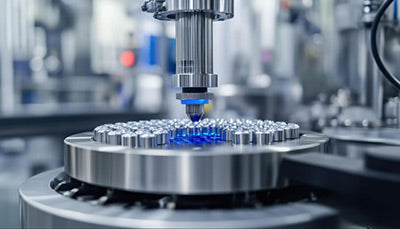Introduction: Precision Motion Demands Intelligent Motor Selection
In modern automation, choosing the right motor involves far more than balancing cost and power. Engineers must align motor architecture with precise performance requirements — from accuracy and response time to load handling and control feedback. Servo and stepper motors both serve as cornerstones of motion control, yet their operational behaviors, efficiency, and integration capabilities differ in ways that can define system success.
Fundamental Differences Between Servo and Stepper Motors
Although both servo and stepper motors convert electrical energy into mechanical motion, their architectures diverge significantly.
Stepper motors divide motion into discrete steps and typically operate in open-loop mode, executing movement based on command pulses without feedback. This makes them ideal for predictable, low-to-medium-speed applications such as 3D printers, lab instruments, or basic positioning systems.
Servo motors, conversely, integrate encoders for closed-loop control. They continually adjust position, torque, and speed in real time, maintaining precision even under dynamic loads. These attributes make servos indispensable in robotics, CNC machining, and advanced packaging lines.
Motion Performance and Load Dynamics
A key distinction between the two lies in how they respond to load variations and speed demands.
Stepper motors provide strong torque at low speeds but lose efficiency rapidly as speed increases. Without feedback, they can stall if torque demands exceed their limit.
Servo motors maintain torque across a broad speed range thanks to encoder feedback and vector control. Their stable acceleration and responsiveness make them ideal for fast, variable-load applications such as robotic arms and automated assembly lines.
Control Precision and System Responsiveness
Stepper motors achieve position through pulse counts but cannot verify if each step has been completed — a limitation in unpredictable or variable-load environments. Microstepping can improve smoothness but not true positional accuracy.
Servo systems, however, use closed-loop feedback to continuously compare commanded versus actual position. Their PID-based control enables instant correction and exceptional responsiveness, ensuring precision even during rapid starts, stops, or direction changes. This feedback-driven control is essential for multi-axis synchronization and complex trajectory execution in advanced automation.
Energy Efficiency and Thermal Management
Stepper motors consume constant current — even when idle — leading to energy waste and heat buildup. This can affect performance stability and reduce component lifespan, particularly in systems with long dwell times or continuous holding torque.
Servo motors dynamically adjust current based on torque requirements, significantly improving efficiency. They run cooler, reduce thermal drift, and extend system longevity — a vital benefit in 24/7 operations like semiconductor fabrication or continuous packaging lines.
Implementation Complexity and Cost Considerations
For simple, cost-sensitive applications, stepper motors are hard to beat. Their straightforward setup, low component count, and minimal tuning make them ideal for basic automation or prototype systems.
Servo motors, while more complex and costly, deliver superior long-term value through precision, adaptability, and efficiency. Their encoder integration, tuning capability, and sophisticated drive electronics justify the investment in performance-critical systems that demand maximum uptime and scalability.
Real-World Examples of Servo and Stepper Success
-
NuLine Automation improved ergonomic stacking of large foil bags using OMRON G-Series Servo Motors and NX102 control, achieving precise high-speed operation over a 4-meter range.
-
Maverick International leveraged OMRON servo control for automated packaging line adjustments, enhancing throughput and material flexibility.
-
Trio Motion Technology boosted labeling accuracy and throughput with stepper-driven motion coordination, offering open-loop simplicity with improved registration control.
-
Packsize Ultra5, powered by Kollmorgen’s AKM2G servo motors and AKD2G drives, achieved rapid, sustainable on-demand packaging with high torque density and uptime.
When to Choose Servo vs. Stepper Motors
Choose servo motors when:
-
Applications require fast, dynamic motion with precise feedback control.
-
Variable loads or multi-axis synchronization are involved.
-
Energy efficiency and 24/7 reliability are priorities.
Choose stepper motors when:
-
Movements are predictable and operate under steady loads.
-
Budget and simplicity outweigh the need for real-time correction.
-
High holding torque at standstill is beneficial.
Hybrid Solutions and Emerging Trends
The line between servo and stepper systems continues to blur. Closed-loop stepper systems — often called “servo steppers” — combine encoder feedback with stepper simplicity, offering smoother motion and heat reduction at a lower cost.
Meanwhile, modern servo drives feature auto-tuning, diagnostics, and plug-and-play feedback integration, making high-performance control more accessible. As Industry 4.0 evolves, servo systems’ built-in data capabilities enable predictive maintenance and enhanced overall equipment effectiveness (OEE).
Conclusion: Aligning Motion Strategy with Automation Goals
The decision between servo and stepper motors is not a simple technical choice — it’s a strategic one that shapes performance, efficiency, and return on investment. Servo systems lead where precision, speed, and adaptability drive success; stepper motors excel where cost, simplicity, and predictability matter most.
By understanding both the strengths and trade-offs of each, engineers can craft motion solutions that achieve the perfect balance between capability, complexity, and control — powering the next generation of intelligent automation.


